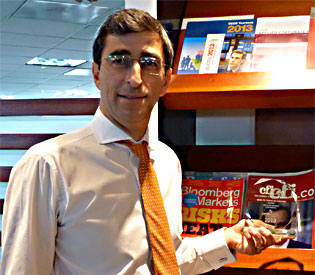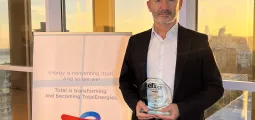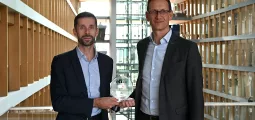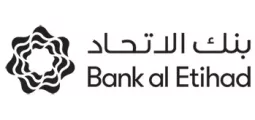BVC: Best Stock Exchange, LatAm

Juan Pablo Córdoba Garcés
The Colombian Securities Exchange has become a driving force for the corporate and economic development of the country that has recently registered outstanding social, economic and political progress. These advancements have allowed Colombia to position itself as the fourth largest economy in Latin America, with an average GDP growth of 4% over the last few years, and with a population of around 48 million, the third largest after Brazil and Mexico.
Due to these results, the Colombian capital market has established itself over the last five years as one of the most important sources of corporate finance in the country, channeling more than $40 billion in resources from private investors, and launching initiatives that have altered the paradigm of how to do business in Latin America. Moreover, it has also been one of the few markets showing sustained growth, not only in volume, but also in the value of its stock market. At the same time, it continues to be one of the most important fixed income markets in the world.
Initiatives such as the creation of the Integrated Latin American Market (MILA), the creation of the standardized derivatives market, and the adoption of internationally renowned technologies and financial instruments, have led the Colombian securities market to be recognized as a model for innovation and leadership. It is following in the footsteps of more advanced markets such as those found in Brazil, Mexico and Chile.
“The BVC has one of the most modern transactional platforms in Latin America: Nasdaq-OMX’s XStream system.”
Because of these achievements, the Ibero-American Federation of Stock Exchanges (FIAB) has recently named the CEO of BVC, Juan Pablo Córdoba, as president of the regional entity for the period 2013 to 2015. It is expected that from his new perch, Mr Córdoba will lead the normative standardization of the region´s capital markets, allowing for a vibrant flow of financial resources and thus further fostering intra-regional business.
Technological Architecture
The BVC has one of the most modern transactional platforms in Latin America: Nasdaq-OMX’s XStream system, which enjoys a well-known reputation in more than 50 countries and will allow the Colombian securities market to be connected to the world’s most developed markets in the near future, thanks to the adoption of international communication protocols (FIX).
To achieve this objective, the BVC has also modernized many of its products, raising them to international standards and thus creating new opportunities for both local and foreign investors. Tools such as the first ETFs, as well as brokering instruments through global custodians, mature rapidly in the Colombian securities industry.
Growth
The growth targets for the Colombian securities markets are focused on the creation of a robust infrastructure that offers investors and issuers real alternatives for participation. The BVC seeks to increase the number of high liquidity issuers in the market, an aim that has already begun to mature over the last few years, thanks to large placements on behalf of recognized local and foreign companies.
That is the case of companies such as Cemex Latam Holdings, which sold its shares through the BVC in 2012, as did other local companies that have started to expand in the region in search of new growth opportunities. Issues such as those of Grupo de Inversiones Suramericana and those of the banks Bancolombia, Davivienda and Banco de Bogotá, among others, have allowed them to finance acquisitions in Central and South American countries, positioning them as “Multilatinas”.
Coincidentally, and aligned to this wave of placements, the country has seen a surge in foreign direct investment, not only in its dynamic oil industry, but also in sectors of the economy such as finance, which has seen the arrival of institutions such as Itaú and BTG Pactual of Brazil, Corpbanca and LarrainVial of Chile, and Credicorp’s Banco de Crédito of Peru. Through acquisitions or the opening of subsidiaries, these institutions have encouraged the presence of international brokers within the market, bringing best management practices and attracting new clients from other latitudes.
Market Architecture
The Colombian regulatory framework is one of the most advanced in the region and has allowed the BVC to broaden its supply of commodities and structured products for brokers and end customers. Within this regulatory environment, the BVC propelled the creation of the standardized derivatives market, which in turn meant the implementation of new tools such as a central counterparty clearing house that eliminates the risk of defaults on transactions in the market. Furthermore, thanks to the creation of this infrastructure, the BVC created the first trading platform for standardized energy derivatives – Derivex – which has tremendous growth potential in the near future.
Indeed, this same regulatory framework has allowed the BVC to consolidate the participation of new players across the value chain. Structural changes to the regulatory and fiscal frameworks that were driven by the BVC during the last decade made portfolio investment more favorable for foreign investors, attracting this type of investment and allowing it to grow at a more rapid pace when compared to other periods: The share of foreign investors in the equities market has grown from 4% to 15% over the last three years.
Nonetheless, the purpose of the BVC is to keep attracting long-term structural investment that supports corporate growth. According to its directors, the aim of the BVC is to achieve a share similar to that of other more developed markets in the region, where foreign investors are responsible for around 30% of the traded volume in equities. In order to support this goal the Exchange has implemented a plan, named Colombia InsideOut, to promote its market in the world’s main investment centers, supported by the main issuers and governmental and monetary authorities. Colombia Insideout, has enabled meetings with more than 500 investors in London and New York over the last two years.
Also at the forefront of internationalization is the Integrated Latin American Market (MILA), which seeks to become a new model for regional investment and an alternative to Brazil. MILA counts on the participation of the stock exchanges, the central securities depositories and the regulators of Chile, Colombia and Peru. These countries have brought their objectives in line with the aim of creating an area of common interest that allows them to become more relevant in terms of global investment.
As a result of this integration, MILA is today the number one market in Latin America in terms of number of issuers, the second in terms of market capitalization, and the third in terms of traded volume. This initiative has had such an impact that within only two years of operating the entry of Mexico as a new member is already being considered. Mexico is currently taking the legislative steps necessary for its incorporation in the near future.
Quality
Improving the overall quality of the local market is one of the main ambitions of the BVC, since it understands this would clearly set it apart from other similar markets which also seek to attract international investors. For this reason it is constantly working to adopt best practices and trading standards, but above all it is continuously encouraging market participants to do the same.
In line with this approach, the BVC adopted the so-called “IR Recognition”, an awareness-building program whose aim is to prompt issuers to adopt better internal policies regarding investor services, which are far stricter than those required by law.
This crusade has been more successful than expected, and today 29 securities issuers are recognized as companies committed to providing good information to their shareholders. These issuers have implemented practices such as the quarterly publication of consolidated financial reports, quarterly meetings to disclose results, the creation of investor relations offices, and even the modernization of their Internet portals, where they already include information in English so that foreign investors are able to understand their content.
The Future
The BVC currently works on various areas related to the internationalization process, the strengthening of infrastructure, and the overall quality improvement of its markets. All these areas, according to the company, provide the basis from which it hopes to consolidate its corporate purpose in the face of the challenges imposed by the globalization of the securities markets and the growing demand for resources on the part of a burgeoning economy such as that of Colombia.



















